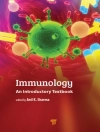Hematology, the study of the blood and its disorders, has existed as a science for about one hundred years. During that period it has remained true to its goals. Despite many advances in the submicroscopic and biochemical realm, hematology has clung to its basic postulate that the majority of blood disorders are expressed in morphologically distinct cell changes. Even modern hematology relies largely on the morphologic examination of cells, and the microscope con- tinues to be its main diagnostic tool. Today we may describe hematology as the only morphologically oriented clinical science. It owes its existence chiefly to the development of staining methods which make it possible to assign mor- phologic structures to specific cellular functions and thus to specific pathologic states. The first step in this direction was the brilliant discovery of panoptic stains in the early part of this century by Pappenheim, Wright, and others. This was followed in the 1950s and 1960s by the development of numerous cytochemical procedures for the differentiation of diverse biochemical reactions and cell types. In the last decade, immunologic methods have been employed to identify cell type-specific antigens as a means of classifying lymphoid and other cells more precisely and more objectively. This has aided in the differentia- tion of many important hematologic diseases. In this fourth edition of the Atlas of Clinical Hematology, we have attempted to update the text and bring it in line with recent developments.
Herbert Begemann & Johann Rastetter
Atlas of Clinical Hematology [PDF ebook]
Atlas of Clinical Hematology [PDF ebook]
购买此电子书可免费获赠一本!
语言 英语 ● 格式 PDF ● ISBN 9783642971556 ● 翻译者 Terry C. Telger ● 出版者 Springer Berlin Heidelberg ● 发布时间 2012 ● 下载 3 时 ● 货币 EUR ● ID 6338908 ● 复制保护 Adobe DRM
需要具备DRM功能的电子书阅读器












